The Toronto Islands are a chain of 15 small islands in Lake Ontario just south of downtown Toronto. The island is the largest urban car-free community in North America and is home to beaches, an airport (Billy Bishop), yacht clubs, a marina, a residential neighbourhood, and even an amusement park. The best part is that they are easy to get to from downtown Toronto, and it can be a cheap getaway from the city (while still technically being in the city).
The Islands are one of my favourite spots in the city. Although locals frequent them throughout the summer, I find it to be a bit of a hidden gem to tourists who either don’t know they exist, or don’t bother taking the trip. In my opinion it’s the perfect summer activity. It’s inexpensive, feels like a little vacation, and has the best views of the city skyline.
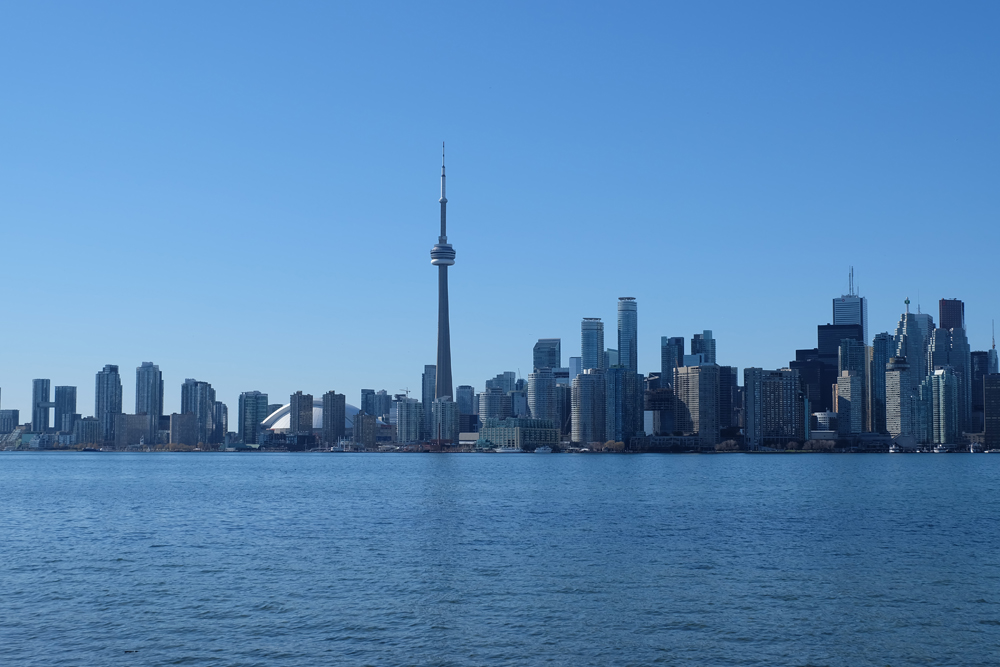
The History (I Promise, It’s Interesting)
The Islands were not always islands but continuously moving sand-bars that originated from the Scarborough Bluffs and carried west by Lake Ontario’s currents. Eroded stone of the Bluffs was carried in the currents to create islands. The sand-bars were surveyed in 1792 by the British Navy but were well known by Indigenous people already.
A number of severe storms and strong waves worked to erode the peninsula, requiring regular repairs to small gaps until 1858 when finally an island was created from a storm that completely separated the peninsula from the mainland and the gap was not repaired.
The Islands today are known as 3 distinct stops on the ferry trail – Centre Island, Ward’s Island, and Hanlan’s Point.
Ward’s Island
By the 1800’s many of Toronto’s wealthiest families built Victorian summer homes on the Islands. Ward’s Island (the east side of the Islands) was named after the Ward family who first settled there around 1830. This family built the landmark Ward’s Hotel in 1882.
In 1899, there were only eight summer tenant on Ward’s Island paying $10 rent (can you imagine?) for the season. By 1913, the number of tents pitched on the Islands had increased to the point that the city had to organize the community into streets, and tents eventually evolved into a seasonal cottage community.
By 1922 the structure of the Ward’s Hotel began to deteriorate and what was left of it was converted to a grocery store and ice-cream shop until 1966 when it was demolished. The hotel created a resort in the city that attracted a ton of tourists.
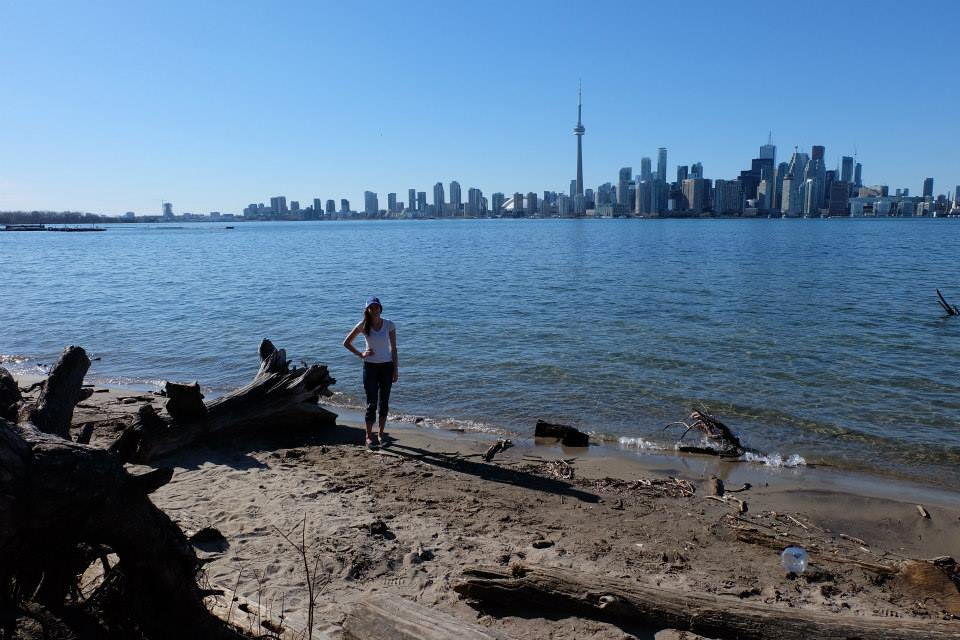
Hanlan’s Point
The Hanlan family was the first year-round inhabitants on the Islands that settled at Gibraltar Point in 1862. When the Islands were transferred from the federal government to the City of Toronto in 1867, they divided the land into lots and allowed cottages, amusement areas, and resort hotels to be built. This west side of the island rapidly became a resort/vacation destination for Torontonians. In 1878 a hotel was built by John Hanlan on the north-west tip of the island, now known as Hanlan’s Point. An amusement park and baseball stadium that could fit 10K people were also built during this time and it was actually home to where Babe Ruth hit his first professional home run.
There are records stating near the Gibraltar Lighthouse, there was a one-room school that existed around 1888 as well. The school became permanent in 1896 with only a single teacher but it eventually burned down and a new school was built that was once home to up to 630 students by 1954. As of 2018, a school still operated classes for Junior Kindergarten to grade 6, a natural science program for visiting grade 5’s and 6’s and a day care centre for small children.
The Airport
In 1937 construction started on a new airport that would be on the site of the park and stadium. The construction of the airport led to the demolition of the stadium and most of the amusement park. It also was the reason for a relocation of the cottage community at Hanlan’s Point where residents could choose between moving their cottages further south at Hanlan’s Point or resettling on Algonquin Island. Algonquin Island at the time was really just a sandbar that was then expanded and in 1938 streets were laid out to accommodate the 31 cottages that were moved (by barge) from Hanlan’s Point.
The airport opened by 1939 (wow, construction was fast back then) and was used in the Second World War as a training field for pilots until it was later moved to Muskoka. This airport is still in working order today operating international flights from the city’s downtown core.
After the War
In 1947, Toronto approved the year-round occupancy of the Islands to help with the housing shortages after the war. This was meant to be an emergency measure only that would expire by 1968. At its peak in the 50s, the Islands residential community was made up of 630 cottages and homes, in addition to a movie theatre, bowling alley, stores, hotels, dance halls, etc. By 1953, Toronto Council undertook to remove the community and replace it with public parkland. With the construction of the Gardiner Expressway removing many acres of parkland along the waterfront, the Islands were to replace the acreage.
By 1955, homes and cottages whose leases had expired or surrendered were being demolished and by 1959 Far Enough Farm, Centreville Amusement Park, and a public marina were opened. By 1971, a new ferry terminal at the foot of Bay Street also was opened that allowed for a larger waiting room for visitors.
By 1963, all Islanders willing to leave had departed and those remaining started to protest against the Metro Council’s plans to remove their homes. Their efforts worked and the Toronto Island’s Residents Association (TIRA) was formed by 1969 and demolitions dwindled. 250 homes on Ward’s and Algonquin Islands had escaped demolition.
Islanders vs. Toronto
The 70s saw no further demolitions as the Metro Parks plans were delayed by year-to-year leases and elections of City Councilors were more sympathetic to the Islanders’ situation. They voted to preserve the community and transfer Island land back to the city. However, Metro Council remained opposed and the Islanders started legal challenges to Metro’s plans in 1974 to delay plans of expropriation. By 1978, Metro Council won several legal battles and obtained possession of the remaining 250 homes. The Islanders appealed to the provincial government and the province agreed to act as a mediator between the City, Metro, and the Islanders.
By July 1980, a sheriff was sent to serve eviction notices to those that remained on the island and was met by a crowd of community members who persuaded the sheriff to withdraw. By the end of July, the community won the right to challenge the evictions but lost when the Supreme Court ruled the city had the right to evict them. The province then started an inquiry into the Toronto Islands and by December 1981 they passed a law legalizing the Islanders to stay until 2005. This kept the land in Metro’s ownership, to be leased to the City who would lease it to the Islanders.
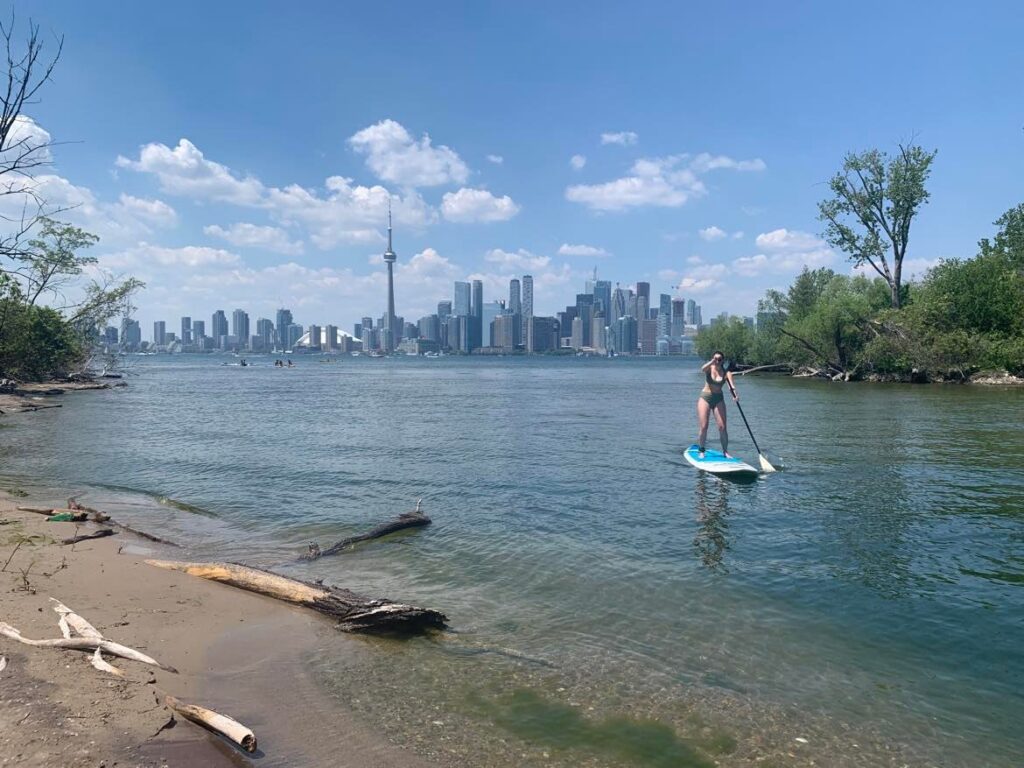
By 1993, the Premier of Ontario helped the residents of the Islands get a legislation passed that granted them continued deeds to their houses and 99-year leases on the land. A Land Trust was established to handle any transfers or sales of the properties.
As of 2018, there are 262 properties on the Islands and under this act established in ’93, the deed to a house can only be transferred to the current owner’s child or spouse. If the house must be sold, the process is handled by the Toronto Islands Residential Community Trust Corporation. The buyer must be an individual on a 500-person waiting list which is established through a lottery. The price is set by the Trust, and no bids or negotiations are allowed. This is intended to eliminate risk of the homes being on the open market and driving up prices, therefore the real estate on the Islands is technically some of the cheapest you’ll find in the GTA (or even in Ontario).
The Islands Today
Today, the Islands are no longer home to hotels, or baseball stadiums, but there is a children’s amusement park on Centre Island that is in operation, some restaurants, beautiful beaches and parkland, and even some neighbourhoods that visitors can stroll through to check out the real estate that was fought over for so long to keep.

How to Get There
Okay, now that we’ve covered the interesting history of the Toronto Islands, lets get to the good stuff. How do you get there? Well there are a couple of options.
Cheapest Option: The Ferry
There is a ferry that runs regularly throughout the summer months (less frequently in the winter) that takes you from the foot of Bay Street to the Islands in only a few minutes. The cost changes every year slightly but it ranges from around $7-$9 round-trip. Make sure you line up for the ferry that’ll take you to the part of the island you want to go because there are three – Ward’s, Hanlan’s Point, and Centre Island. If you don’t have kids, I’d avoid Centre Island as it is incredibly busy during the summer months. Ward’s is personally my favourite as it’s home to a lot of the homes you can walk by, plus it’s quieter and more serene.
Buy tickets online in advance to avoid the lines here.
Alternative Option: Water Taxi’s
There are several companies along the Toronto Waterfront that offer water taxi services that will take you from land to the islands quickly. You’ll pay more for this option (usually around $10-$12 each way) BUT you avoid line ups on busy days, and you don’t have to wait for the next ferry if you arrive at an off hour. Some companies to check out are:
Note: You do not need to buy tickets in advance for the water taxi. You can pay by card or cash when you arrive
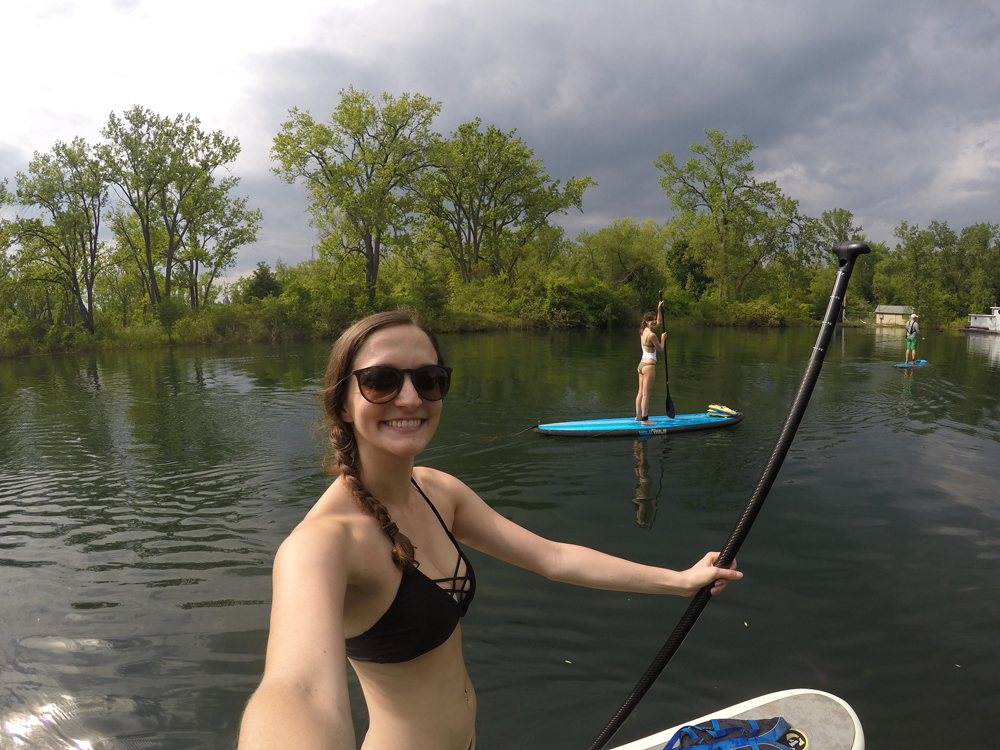
What to Do
There is a ton to do at the Toronto Islands depending on what kind of day you are looking for. Here are some options:
- Rent a canoe or kayak from The Boat House
- Rent a stand-up paddleboard or take a lesson from Toronto Island SUP
- Rent bikes for 1-4 people from Toronto Island Bicycle Rental
- Visit Centre Island Amusement Park with your kids
- Relax on one of the many beaches or parkland across all three parts of the island
- Bike or walk across the island visiting all three sections (around 5km)
- Enjoy lunch at any of the food spots across the island
- Grab a snack or drink at The Island Cafe or The Riviera at Ward’s Island
- Go topless at Hanlan’s Point’s nude beach
- Visit Far Enough Farms
- Play frisbee golf on the extensive island golf course
- Pack a picnic and cooler of cold drinks to enjoy at any of the beaches or parkland
For more inspo, click here

My Tips
A few helpful tips to make sure you have the best day on The Toronto Islands:
Arrive early: If you are going on a weekend in the summer, arrive early (11am or earlier) to beat the crowds at the ferry
Buy online: Buy your ferry ticket online and there usually is a line for online tickets that moves quicker than the regular lines
Pack food and drinks: The restaurants on the island are naturally expensive and overrated, I rather pack food and drinks in a cooler for an extra cheap day. It’s not uncommon to see people bring their own grill to grill up some burgers right at a picnic table
Avoid Centre Island: If you don’t have kids, avoid Centre Island as it’s the hub and full of children-friendly activities which means chaos and less relaxation
Bring your bike: If you have a bike, you can bring them on the ferry or water taxis to bike around through the island
Don’t bring a Bike Share: Many people make the mistake of borrowing a Toronto Bike Share on the mainland and bringing it to the island. These bikes you need to dock every 30-minutes to avoid excessive charges and there is no dock on the island. This means it’s going to be an expensive bike rental day and you’re better off renting right at the place on the island
Do you have your own tips? Share them in the comments!



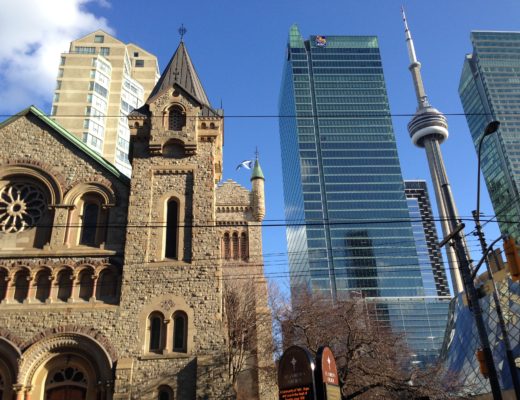

No Comments